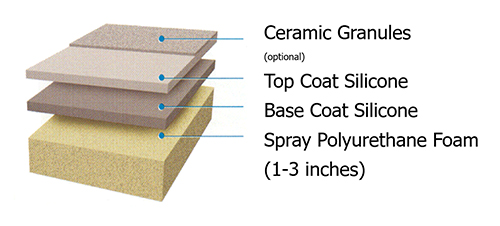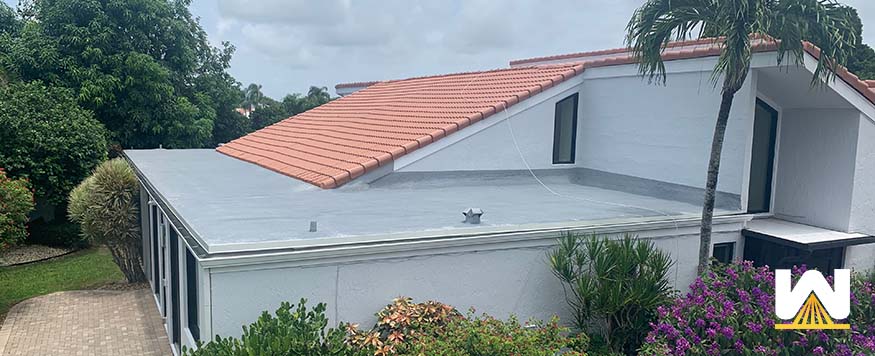Perhaps you’re on the board of your HOA and you have some roofing issues. And let’s say you’ve done some simple repairs for a while, and you think it’s time for a new roofing system.
Which roofing system should you choose?
Popular options are TPO, Metal, and Spray Polyurethane Foam.
In this article, you’ll learn:
- How to reduce the cost of your project by minimizing tear-off
- How to reduce your resident’s future energy costs
- Costs when the warranty expires
- Wind up-lift potential
- Tips on locating a quality roofing contractor
And just so you know, we only write articles based on true events and experiences. West Roofing Systems has been in commercial roofing since 1979.
Every piece of content written is produced in-house. And every article is reviewed and edited by a roofer/salesman with 30+ years of experience in the field.
Related Case study: Peppertree Condos – 20 roofs, 48,000 total sq. ft.
The cost of removing a roof
When you get a quote from a commercial roofing contractor, ask them if they will need to remove and replace the roof.
Ask them about the entire roof.
Some roofing systems can be installed over what you already have. The contractor will only remove the areas that have wet insulation, or the membrane if it’s damaged.
Minimizing the amount of tear-off is one of the easiest ways to reduce the cost of your HOA’s roofing project.
Reducing future energy costs
When getting a new roofing system, ask the contractor if there’s going to be an increase in R-value. R-value is a material’s ability to allow heat or cool to pass through it.
The higher the R-value, the less heat/cool that will escape through the roof.
This is important for HOA’s because many of its residents are on fixed incomes. If energy costs are reduced, exposable income is increased.
If two roofing systems are similar in price to install, but one will reduce future energy costs by 10%, which one would you choose?
The cost when the warranty expires
When the warranty of a commercial roof expires, most roofing systems are in poor condition and need to be torn off.
But if the initial installation was great and you’ve had routine maintenance, you can probably add a coating system over a metal or single-ply roof.
These coating systems usually cost around $3.50-$7 per square foot***, while a complete tear-off and installation of a new roofing system will likely cost more than $15 per square foot.
How is a spray foam roof different?

A spray foam roofing system is different because it’s renewable. A foam roof is protected with coatings that will wear away naturally as time goes on. A typical example is 20 mils of coating for a 10-year-warranty.
In year 10, 7-8 mils of coating will probably be left.
Once the warranty wears out, the roof can be cleaned and more coating can be added onto the roof.
The process can repeat over and over without any performance loss.
The cost for a spray foam recoat is usually 1/3 to ½ of the cost of the initial installation.
NOTE: When choosing a roofing system, ask the contractor what will happen (and how much will it cost) once the initial warranty expires.
Wind uplift potential
Condo associations are located everywhere, but many of them are in warmer areas, such as Florida. To prevent extensive damage in high-wind areas, there are strict laws when it comes to roofing systems.
One measure is wind uplift potential. In simpler terms, how much wind can this roofing system take before it gets torn off?
When considering a roofing system, ask the contractor how much wind uplift potential the roof has.
For your knowledge, a spray polyurethane foam roof is the best roof system against the wind. This is because the roof is fluid-applied (there are no seams for the wind to get under), all the penetrations require no seams, and the entire roof is fully-adhered to what’s below.
All other roof systems require fasteners or seams to attach pieces of a roof together. Because a roof expands and contracts with weather changes, the most stress on a roof is at the seams. When these break down, wind can get underneath them and pull them apart.
Tips on choosing a quality roofing contractor
While there are pros and cons of TPO, Metal, and Spray foam roofs, every single roofing system will perform great if it’s installed correctly.
The problem is the “installed properly” part.
Here are some tips on identifying a quality roofing contractor:
Look at Google Reviews
People usually only leave a review when something goes wrong. Check the company’s Google reviews to see what others have said.
Case Studies
Does the contractor have case studies of HOA’s? Have they ever worked in your area? If you’re thinking about installing a spray foam roof over an existing gravel-built-up roof, does the contractor have case studies doing that exact work? Or a client list who’s had similar work done?
Longevity
How long has the company been in business? Everyone has to start somewhere, but the last thing an HOA needs is a company that installs and warrants multiple roofs and then disappears in a few years.
Conclusion
Hopefully this article was helpful! If you have other questions, please fill out a “contact us” form and we’ll reply ASAP.
Here are some other readings/videos that you might find useful:
BLOG: Spray Foam Roofing 101: 6 Basics You Need to Know
BLOG: The 7 Primary Advantages of A Spray Polyurethane Foam Roofing System
VIDEO: Spray Foam Roofing for Existing Roofs – A Beginner’s Guide


